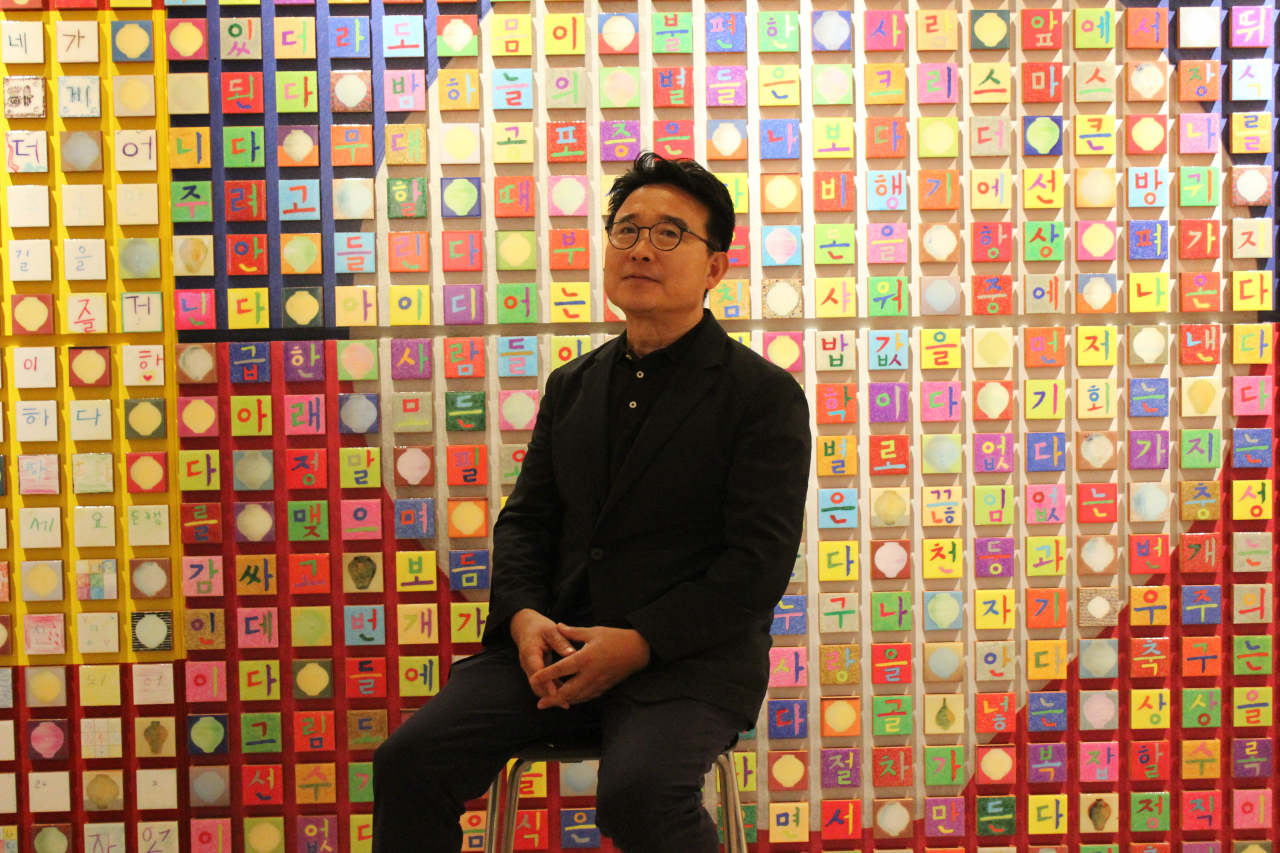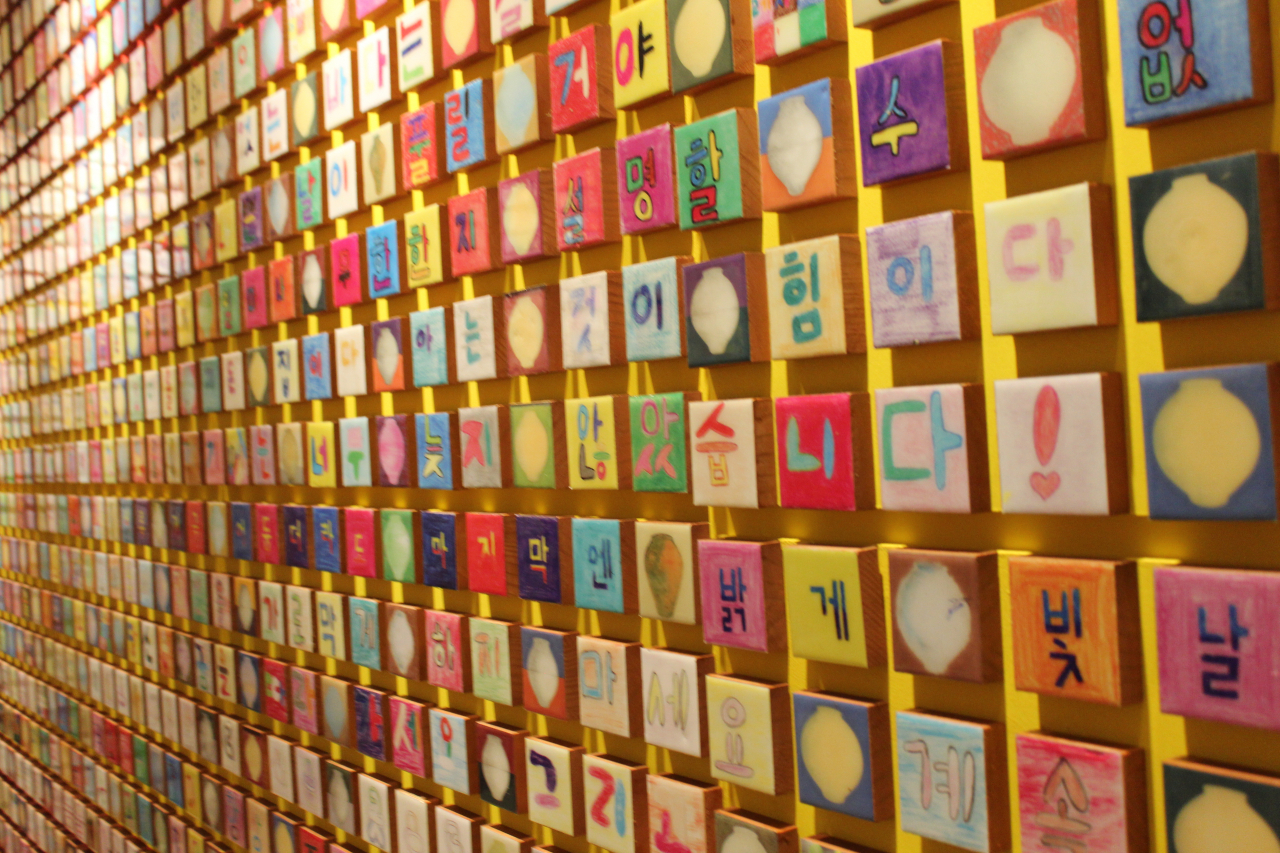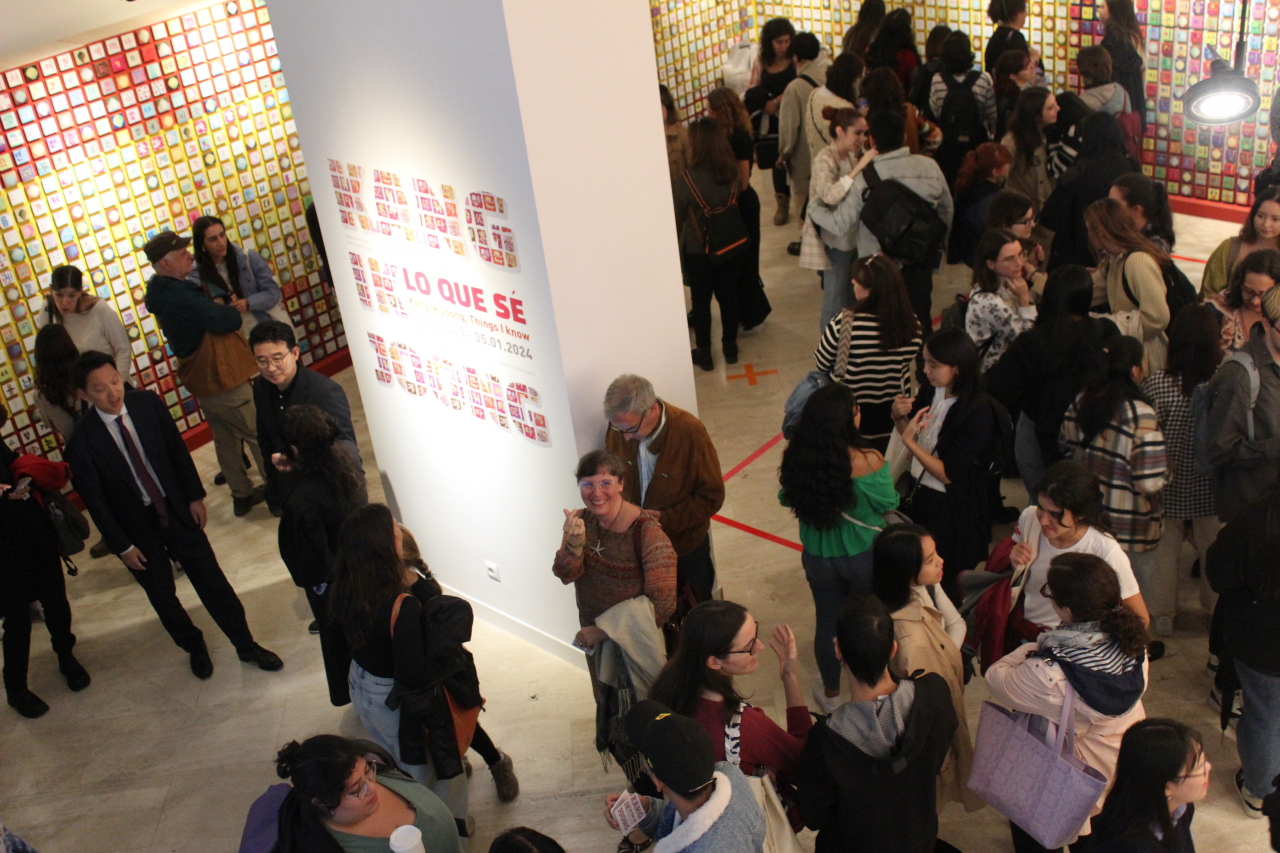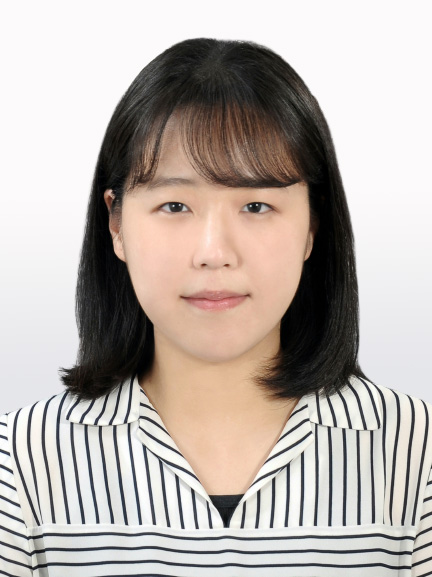[Herald Interview] Kang Ik-joong weaves Hangeul philosophy into Spain mosaic art
By Hwang Dong-heePublished : Oct. 22, 2023 - 16:03

MADRID -- A grand mosaic wall art installation by New York-based Korean artist Kang Ik-joong has made its Spanish debut, featuring more than 6,000 hand-drawn Korean characters on tile canvases.
The 6,072 three-by-three-inch tiles, covering three walls at the Korean Cultural Center's exhibition space in the Spanish capital, were created by around 365 students studying the Korean language in Spain. They were asked to inscribe their favorite Korean phrases, or the things they know, along with their name.
Titled "Things I Know," the installation is a vibrant tapestry of ideas and colors, reflecting participants' varied styles and concepts, Kang said.
The inspiration behind the installation came from Kang's eponymous poem, where he began to chronicle his own "knowledge" about 35 years ago. His first sentence was: "The sky is light turquoise just before a storm.”
“I was curious,” said Kang in an interview with The Korea Herald on Thursday, ahead of the exhibition's opening ceremony the same day. “I wrote about 4,100 things that I know. I wanted to ask what others know and hear their inner voices.”
“Many people are learning Hangeul around the world, so I wanted to collect all the voices in the hearts of people around the world and show them through the expressive medium of Hangeul.”

Kang said Hangeul is the perfect vessel for the collection of thoughts because “it is a letter with a philosophy in which consonants and vowels come together to make sounds, like a harmony of yin and yang.”
“It is a writing of peace and harmony … and has a philosophy in the language.”
The project also serves as an opportunity for people to take a moment to listen to their inner voices, he said.
"We usually live our lives listening to what happens outside instead of listening to what happens inside us. Even when we read books and newspapers, they are all other people's news or thoughts, not ours. This situation has worsened especially with social media,” Kang said.

Kang used the analogy of a garden in explaining the wall art.
"In the garden, there are roses, chrysanthemums and lilies. While they are distinct flowers, when viewed as a whole, they form a single garden."
He described the wall as one that connects people, rather than divide them.
“Different thoughts and ideas come together to form one big wall. In this kind of public art, each person is precious, and together, it stands as a collective expression.”
Kang has integrated his signature motif of the moon jar, a traditional Korean porcelain in which the upper and lower parts are crafted separately and subsequently combined before the jar undergoes kiln firing -- a process mirroring how each Hangeul character is written.
A tile with a moon jar painting is placed at the end of each sentence of the mural. And when looking at the wall art from afar, the image of a moon jar glows in white at the center of the mosaic walls. On both sides of the moon jar image, the other walls are painted with the colors of the Spanish flag -- yellow and red.

Kang's vision for the project encompasses the entire world.
“I think it can be possible. Spain is the first large-scale Hangeul mural project. This is a sample of what we can do, and a starting point,” he said, citing institutions like the King Sejong Institute and Korean Cultural Center, which promote the Korean language and Korean culture, respectively.
There are 229 King Sejong Institute branches around the world across 79 countries, and 35 Korean Cultural Centers in 31 countries, according to the Korean Culture and Information Service.
Other Hangeul projects in Canada, Cairo and New York are in the works, Kang said, with Spain pioneering the first large-scale Hangeul mural project.
“The fire continues to live in my heart so that it never goes out. And I always think to myself that the embers should not go out. I want to continue to have that burning desire that I had in the beginning -- that I want to create a global scale works in Korean,” Kang said.
The exhibition in Spain runs through Jan. 5, 2024.
The Korean Cultural Center in Spain, King Sejong Institute, The Korea Herald, Complutense National University of Madrid, University of Salamanca and University of Malaga are co-hosting the event.












![[Kim So-hyun] The quiet taxi driver from Paris](http://res.heraldm.com/phpwas/restmb_idxmake.php?idx=644&simg=/content/image/2024/04/25/20240425050891_0.jpg&u=)







